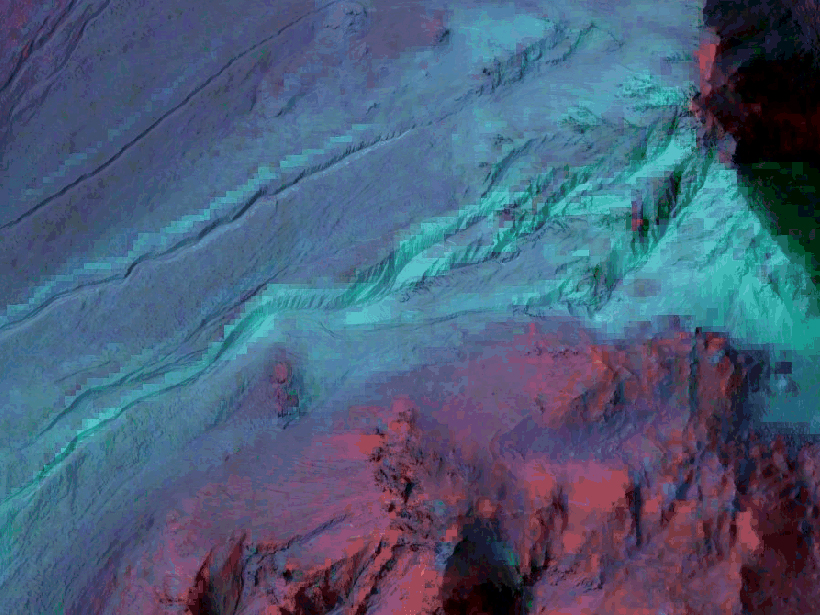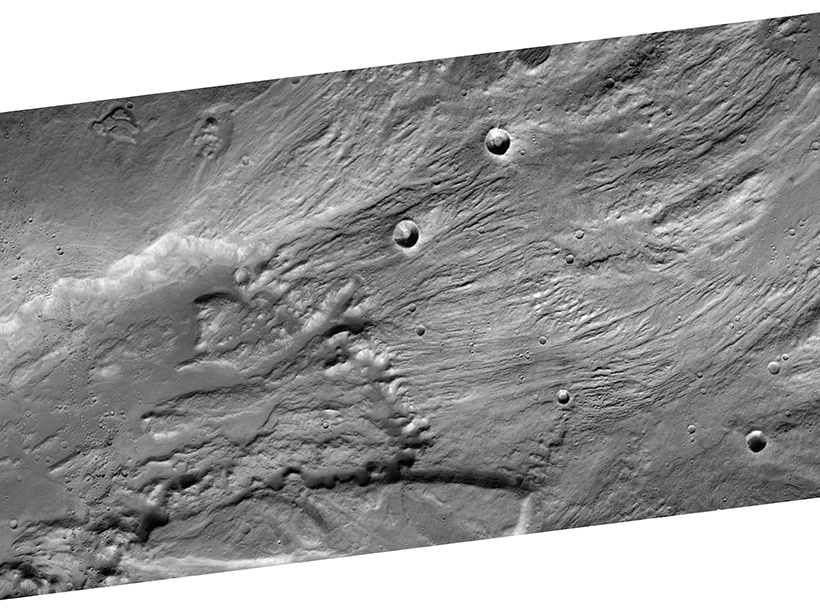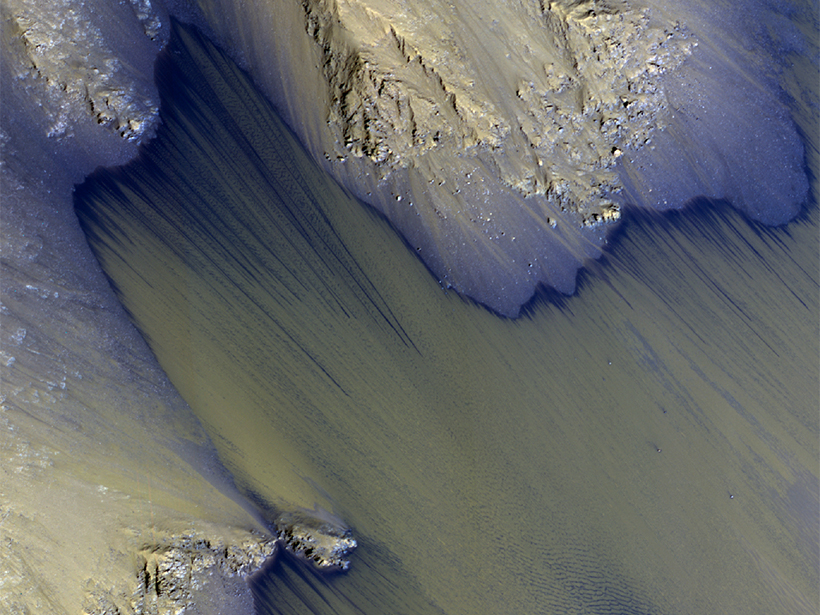New orbiter data support an important role for seasonal frost—not liquid water—in the formation of Martian gullies.
Mars
Rocks in Chile Help Scientists Hunt for Life on Mars
Investigating oxalate minerals in the Atacama Desert provides a terrestrial analogue to test techniques that could be used to study the carbon cycle in the cold deserts of Mars.
Minerals Hint at Liquid Groundwater, More Oxygen in Mars's Past
Manganese deposits in Gale Crater fractures are similar to Earth features that usually require flowing water and highly oxidizing conditions.
Reconstructing Catastrophic Floods on Earth and Mars
A new theoretical model suggests that ancient floods that carved canyons on Earth and Mars may have been much smaller but lasted longer than previously thought.
A Cluster of Water Seeps on Mars?
The discovery of dense concentrations of recurring flowlike features in two Valles Marineris chasms could aid in the search for life and influence future exploration of the Red Planet.
Precision Landing Will Be Key to NASA's Mars 2020 Rover
Landing robotics distinguish the craft from past models, allowing researchers to target smaller flat areas that are surrounded by rock.
Carbon Dioxide Frost May Keep Martian Soil Dusty
Temperature readings acquired from orbit show that Mars's surface gets cold enough at night to allow layers of solid carbon dioxide frost up to several hundred micrometers thick to build up near the equator.
A (Dust) Devil of a Time—on Mars
New computer simulations of Martian dust devils could aid Red Planet weather forecasts.
Curiosity Sends Curious Water Data from Mars
The rover's neutron spectroscopy instrument hints at an unexpected trend: The upper soil levels in the layers of Gale Crater's Kimberley formation seem to hold more water-associated hydrogen.
As Mars Gets Close, So Does a Blitz of Red Planet Dramas
NASA's first Mars program director advised the creators of the new film The Space Between Us, which opens this summer, on the science related to Mars colonization.










